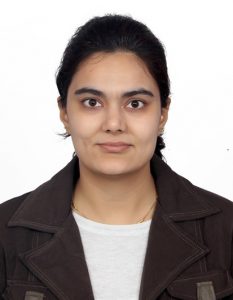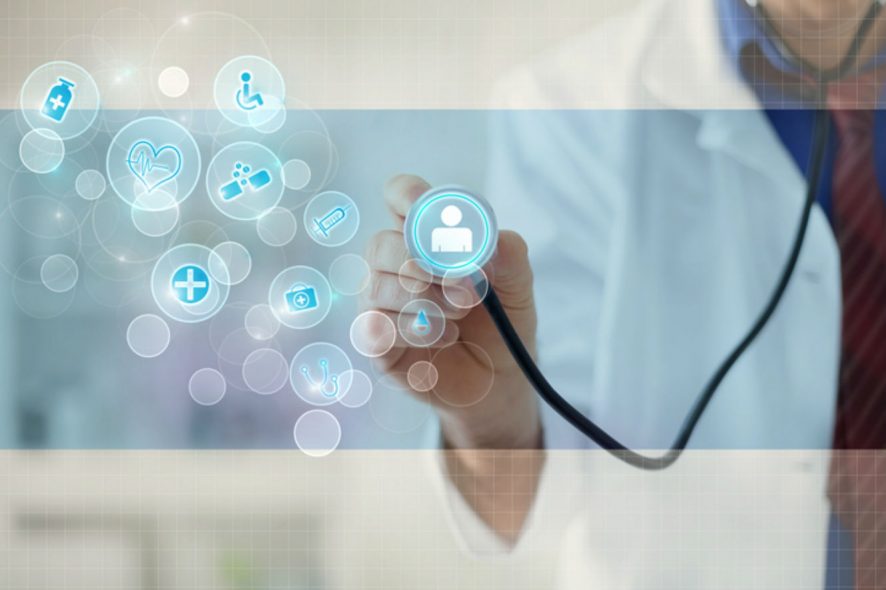Digital healthcare is the “healthcare of the future”. Like many other markets, India too is at the cusp of a “digital health” revolution. With an estimated market size of 100 billion USD in recent years, one of the fastest-growing industries in India is healthcare. Healthcare in India is a prime candidate for investment, especially through digital interventions, and this trend is already picking up. Over the last couple of decades, developments in information and communication technology have made the most palpable impact on healthcare management all over the world. Newer terms like telemedicine, e-health, telehealth and digital health surfaced to encompass broad concepts like electronic medical records and hospital automation, telemedicine, e-learning in the health sector, e-governance and so forth.[1] The time is ripe for healthcare companies to embrace innovation and emerging trends to successfully steer new-age technologically driven business strategies by capturing consumer interest.
The e-health space has seen a lot of innovative abovementioned terms being developed. Protection of these ideas and inventions becomes essential in this highly competitive market. India’s Intellectual Property Rights (“IPRs”) regime allows for such protection in various forms, notably patents, copyrights, trade marks and designs. In the context of e-health, development is concentrated in the areas of software applications (including mobile applications) and wearable devices.
Patents
Behind every e-health application is the software that runs it, which is essentially a computer program. A computer program “per se” is excluded from patentability under Section 3(k) of the Patents Act, 1970. The Indian Patent Office, however, in its Guidelines for Examination of Computer Related Inventions (“CRIs”), states that while the CRI in itself is not patentable, it is possible for a CRI claimed in conjunction with a novel hardware to be patented, provided it meets the other requirements such as the three-prong test laid down under the guidelines. Patents for software programs have been issued in the past where it involves a hardware component as well. If the technology/software fulfils these requirements, it could file for a patent and receive protection if the same is granted.
A patent may not be granted if the device or program is determined to be “a process for the medicinal or other treatment of human beings and animals” under Section 3(i) of the Patents Act, 1970 (Section 3 deals with what are not considered inventions). However, the patent examiner’s observations in Lalit Mahajan’s patent application[2] distinguished between a device and process, where “a device for detection of antibodies to HIV (Human Immunodeficiency Virus) and p24 antigen of HIV in human serum or plasma” was found to be outside of the scope of Section 3(i).
Copyright
Software would fall under the definition of “computer program” under the Copyright Act, 1957 and according to Section 2(o), a literary work includes computer programs. Hence the literal part i.e. the source code, is protected under copyright law. The copyright, however, extends to the form and substance of the work, and not the idea itself. This would mean that the idea would have to be expressed in some form of medium before it can be protected.
Clinical guidelines and data could be protected under the Copyright Act, if it is expressed in some form of medium. A mere compilation of data without any further effort may not be protected by copyright law. This is derived from the “sweat of the brow” doctrine, where eventhough there may not be any originality in content such as tables or databases, copyright would subsist only when a person undertakes an independent collection of the information. The person is then entitled to have his effort and expense protected.
Design
In terms of e-health, the two major components that would require design protection would be the graphical user interface (“GUI”) of applications and the design of the devices. GUI may be protected under the Designs Act, 2000, more specifically under Article 14-04 of the Designs Rules, 2001, which covers “Screen Displays and Icons”. However, there have been applications by companies for registration of its GUI which were rejected. The reasoning of the authorities has been that a GUI cannot be registered as a design, as screen displays do not constitute an article, which is one of the requirements for design protection. However, some icons and user interfaces have been registered as a design under Article 14-99 (Miscellaneous). A company could, therefore, apply for design protection of its GUI.
The design of various devices could also be protected under the Designs Act. However, “design” under this Act excludes any mode or principle of construction, or anything which is in substance a mere mechanical device. The design of the device can thus be protected provided it does not fall within the exceptions under the Designs Act.
Trade Mark
The “mark” of an e-health application or device could be registered as a trade mark under the Trade Marks Act, 1999, subject to certain exclusion criteria that form grounds for refusal of the trade mark, such as being devoid of distinctive character or marks or indications which have become customary in the current language or established practice of trade.[3]
Conclusion
The e-health market presents a lot of opportunities, but with every opportunity, there are bound to be risks involved. Innovation in this sector is yet to reach a saturation point, with new products frequently being introduced in the market. The legislative framework to protect and regulate such developments will remain one step behind, as it is yet to be seen how the industry will mature. Regardless, regulators have taken note of the restrictions and in many cases, the absence, of the law and are striving to formulate forward-looking policies and legislations.
It is heartening to see that Government of India is committed to implement e-health and the Steering Committee of Planning Commission strongly suggested that all district hospitals and primary health centers and sub-centers be connected with telemedicine, Skype or similar audiovisual media and to encourage mHealth (healthcare through mobile phones) to reach the remote corners of the country.[4] India has started successful programmes to extend the telemedicine services to neighbouring African and Saarc (South Asian Association for Regional Cooperation) countries.[5] There is no doubt that India is very close to catch up with the rest of the developed world in the practice of e-health for all.
*Vaishali Singh is an Assistant Professor of Law, School of Law, University of Petroleum and Energy Studies.
[1] Sinha V.D.S., Tiwari R.N., Kataria R., Telemedicine in Neurosurgical Emergency: Indian Perspective, Asian J. Neurosurg 2012.
[2] Patent Application No. 693/KOL/2007 decided on 11-1-2010.
[3] S. 9 of the Trade Marks Act, 1999.
[4] Suja Nair Shirodkar; Health Ministry sets up 10 panels with top officials from DCGI office, SLAs to revise D&C Rules, available at <http://www.pharmabiz.com/NewsDetails.aspx-?aid=96214&sid=1>.
[5] Saarc Telemedicine project in India, available at <http://www.saarctf.org/Countries/India.aspx>
[Image Courtesy: Healthcare IT News]








Very good and informative blog.
Foreign Investors Emerging Markets
Really Nice post